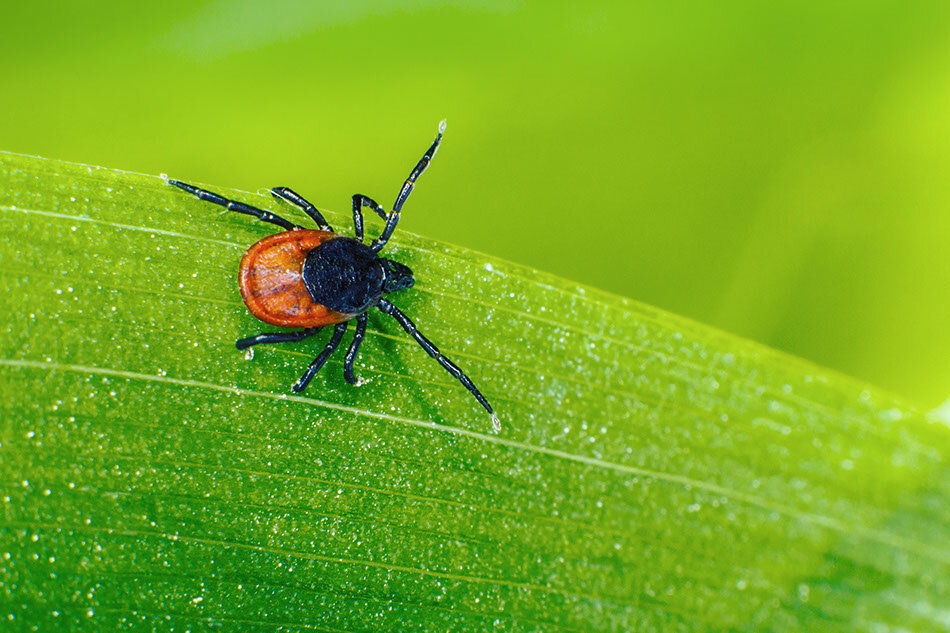About Lyme
Lyme disease is an infectious bacterial disease caused by a spiral-shaped bacteria (spirochete) known as Borrelia burgdorferi. There are approximately 300 strains of Borrelia worldwide which lead to complexity in diagnostics and treatment protocols.
In its early stages, Lyme disease commonly results in a rash, joint pain and headaches. Later-stage Lyme disease is characterized by arthritic pain, cognitive difficulties, fatigue and other symptoms that can have an enormous effect on a patient’s life.
Symptoms
Common symptoms of early Lyme disease include:
EM rash (80% are solid-colored, and less than 20% have a bull’s-eye appearance)
Fever
Headache
Fatigue
Muscle and joint pain.
The non-rash symptoms are often described as a “summertime flu.”
Some people may notice areas of numbness or tingling.
Once the infection extends beyond the skin, it can affect any system of the body, causing symptoms including:
Debilitating fatigue
Headaches
Muscle pain
Arthritis
Numbness
Tingling
Nerve pain and weakness
Heart problems
Psychiatric symptoms
Difficulty with thinking, memory, language and math skills
Problems with vision and hearing.
Co-infections
Lyme Borrelia are often transmitted along with other micro-organisms known as Co-infections. These are opportunistic parasites, viruses, and other pathogens. See our partial list here.
In many cases, an infectious bacterial load is complicated by other issues. Food sensitivities, heavy metal/mold toxicity, gastrointestinal disorders, liver, hormonal or mitochondrial dysfunction, or chronic inflammation can often worsen Lyme symptoms. These require a complex, individualized treatment plan.
We listen carefully to each patient's medical history to develop a clinical assessment. We use ground-breaking laboratory testing to aid in an integrative diagnosis and treatment plan.
Our approach to Lyme disease treatment stems from various modalities. As each patient presents a different set of Lyme symptoms, protocols are designed specifically per patient.
Common co-infections:
• Coxiella burnetii
• Tick-borne Relapsing Fever (TBRF)
• Powassan Virus
• Cytomegalovirus
• Toxoplasmosis
• Bruscella
• Anaplasma
• Babesia
• Bartonella
• Chlyamydia Pneumoniae
• Epstein-Barr Virus
• Erlichia
• HH6V
• Rocky Mountain Spotted Fever
• Tularemia
Where is it found?
Lyme disease in California
and the United States
Image courtesy lymedisease.org
Statewide Integrated Pest Management Program Report On Lyme Disease in California (PDF)
University of California, Agriculture and Natural Resources
Los Angeles County West Vector and Vector-Borne Disease Control District
Lyme Disease Is In All 50 states
Quest Diagnostics findings from over six million Lyme disease lab tests
Prevention
Walk in the middle of trails. Avoid sitting on logs and leaning on trees. Wear a hat, tuck in hair if possible. Wear a long-sleeved shirt fitted at the wrist. Wear shoes, no bare feet or sandals. Wear long pants tucked into high socks. Consider DEET for skin and permethrin for clothes. Do tick checks immediately and then again 3 days after outdoor activity. Taking a shower reduces chances of missed ticks as they often travel to warm protected areas of the body. If you find a tick, remove it carefully (see below) and save it. Ask your vet about protection for your companion animals.
Also try Damminix Tick Tubes. Studies have shown that Damminix Tick Tubes reduces the risk of exposure to an infected tick by up to 97% on a treated property. Visit ticktubes.com for more info.
Tick Removal
Remove tick with tweezers. It's very important to get as close to the skin as possible and pull straight out. Save the tick in a sealed container for testing. Tick testing is available through IGeneX Labs.
Specially designed tick tweezers are available for purchase from TickEase.
About testing
Currently, the CDC test for the bacteria that causes Lyme disease (Borrelia burgderfori) measures the antibodies our body makes against the microorganism. This test focuses on a single strain, B31 – mainly associated with arthritic symptoms. However, there are 12 known genospecies. One of these genospecies has over 100 strains in the United States and 300 strains worldwide.
Due to testing problems, less than one 1 out of 2 people who have Lyme have a positive test. The Centers for Disease Control (CDC) has advised physicians that Lyme disease should be diagnosed based on the patient’s clinical symptoms and not the laboratory test. The laboratory test is merely used to report cases as a field study to the CDC.
Find out why someone may have a false-negative test result. Learn more.
Research
Our clinic has compiled an extensive listing of Peer-Reviewed Lyme research papers. Read here.
Tick Tracker
In July of 2017, 13-year-old Olivia (also the founder of LivLyme Foundation) was on vacation in Missouri with her family. While outside Olivia noticed a tick on her dog, Mo (short for Missouri). Olivia & her mom watched the tick start to burrow into Mo’s leg. They quickly found needle nose tweezers to properly remove the tick from Mo. As Olivia was removing the tick she asked her mom, “Is there an app that can show what ticks are around us?” That night Olivia looked online and found that currently there was no app to help track, report, and educate people about ticks. This gave Olivia the idea to create the TickTracker app to help keep everyone safe. Check it out.
Check out our Lyme disease resources.

Book a consultation today
Call to schedule an appointment with Dr. Erica Lehman:
(310) 504-3700








